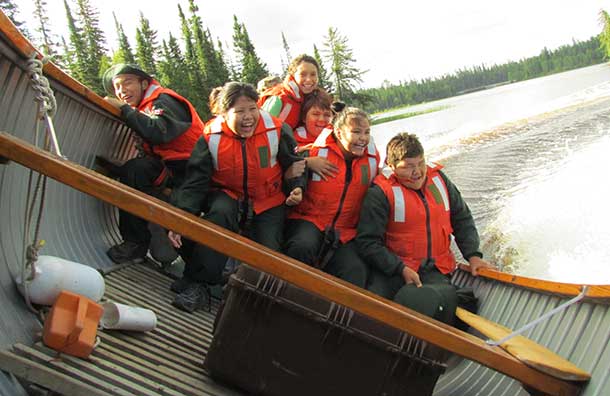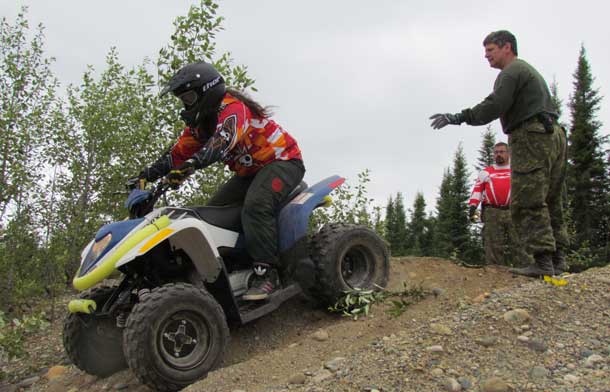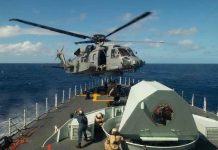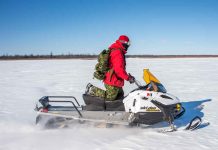

THUNDER BAY – The training program for Junior Canadian Rangers at Camp Loon, an advanced training camp for Junior Rangers, got off to “a great start” over the weekend, according to Captain Caryl Fletcher, the army officer commanding the Junior Rangers in northern Ontario. The annual camp is held in the bush, 50 kilometres north of Geraldton, and runs for eight days.
“We’ve had a great start to the camp,” Captain Fletcher said. “Saturday was the best first training day I’ve seen in my time in terms of organization and positive responses from the kids.”
The Junior Rangers are a national program run by the Canadian Armed Forces for boys and girls aged 12 to 18 in remote and isolated communities. There are 750 Junior Rangers in 20 First Nations across the Far North of Ontario and 160 are at the camp, which stresses safety on the land and water and in personal life styles.
“The camp is not for recruiting,” Captain Fletcher said. “It’s basically for educational purposes for the benefit of First Nations in the North and to allow them to have fun for a short period of time during their summer vacation. For many of the kids here this is the only time they will get out of their communities for the whole summer. This is the highlight of their summer for many of them. We work hard to make the camp the highlight of their summer.”
Training is provided by 50 Canadian Rangers and 50 other military personnel from military units across southern Ontario.
Instruction in the safe operation of all-terrain vehicles is an important part of the training.

“ATVs are one of the main forms of transportation in First Nations, said Ranger Irving Wesley, “and they are the cause of a number of injuries and the occasional death. At home in Kashechewan, and in other communities, young children drive ATVs, a dangerous machine, at a very early age without any proper training. I drove one for the first time when I was nine years old. But ATVs can kill. We teach the kids how to use them safely. The army taught me how to drive an ATV safely and we teach them what the army taught me.”
At Camp Loon Junior Rangers learn how to check their machine for mechanical and other defects before they ride them. They learn to wear gloves, long sleeves, eye protection, and most importantly, a helmet when they ride.
The highlight of the day’s training is a challenging 20-kilometre cross-country ride that takes more than an hour to complete. During it they negotiate fallen tree trunks, soft sand, shifting stones, hills, plastic cones, bumps, and they have to manouevre between trees with only inches to spare, as well as overcoming other obstacles.
“I really enjoyed the ATV training,” said Braydon Fox, 13, of Mishkeegogamang. “It’s fun and they teach you a lot.”
Northern Ontario has the highest number of Aboriginal deaths by drowning in Canada, partly because it has a large Aboriginal population but also because the short summer and cold waters keep people from learning to swim.
The camp provides Junior Rangers with a Canadian Lifesaving course called Swim To Survive, which provides basic swimming instruction. As a result most go home able to swim.
“When they arrive at the camp many of the Junior Rangers are scared of the water, they can’t swim, even though they spend a lot of time in power boats travelling to hunting camps and to harvest different kinds of food,” said Sergeant James Doherty, an army instructor. “Most of their communities are on lakes or rivers. A lot of them can’t operate power boats and we teach them. We also teach them to canoe.
“We want them not to be scared of the water. We want them be friendly with water and how to operate in it safely.”




